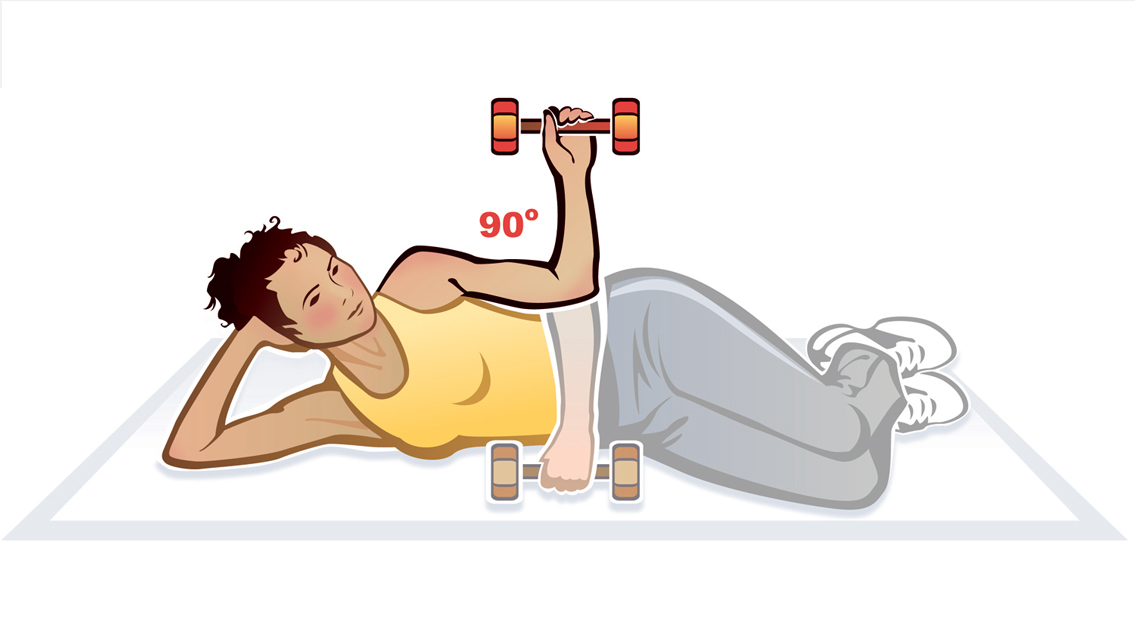The hypermobile phase is the first stage. Linda Bluestein, who specializes in hEDS and treats performing artists with an increased risk for hypermobility disorders, refers to it as the “fun” phase. “It’s when you’re able to do all kinds of party tricks. I used to put both feet behind my head and walk on my elbows and do all kinds of goofy things to entertain people,” she says.
Knight notes that children are generally more mobile than adults, with extra space in the joints where bone can grow. Their ligaments and tendons are also more flexible, protecting them from tears as they learn to crawl and walk, so hypermobility in kids is not always a sign of trouble.
The pain phase is the second stage for those with hEDS or HSD. Between these first two phases, there’s often a period of mystery ailments and injuries, Bluestein notes. This might include joint instability, musculoskeletal pain, gut symptoms, migraines, or mast-cell activation such as eczema, asthma, and allergies. (Learn more about mast cells here.)
“The pain phase is when the nervous system has had enough painful input that someone starts to develop nociplastic pain,” Bluestein explains. Nociplastic pain (sometimes called central sensitization) arises from pain signals that have become distorted or overly sensitized in the central nervous system.
“It comes when people have been in pain for a while, so their nervous system is just not able to filter things out,” she says. This phase usually arises in someone’s second, third, or fourth decade of life.
“This is when we see most of our patients presenting. They might have had injuries from hypermobility ongoing for years, and [the underlying cause] has been undiagnosed,” says Dacre Knight, MD, medical director of the Ehlers-Danlos Syndrome Clinic at Mayo Clinic in Jacksonville, Fla. He notes that the average timespan from symptom onset to diagnosis is more than 10 years.
A trigger such as an injury or infection can also launch someone into the second phase. “If the immune system gets activated, we get more inflammation, which can increase pain and other symptoms,” Bluestein says. “It’s not uncommon for children with hEDS or HSD to be functioning at a high level until they hit a certain trigger.”
Puberty itself may serve as a trigger thanks to changing hormones. This may include issues with mast cells, which are white blood cells that play an important role in the immune system and are found throughout the connective tissue. They have hormonal receptors on their surface, and estrogen can stimulate mast cells to release histamine and other chemical mediators that may play a role in hypermobility symptoms.
“We don’t know how much of the increase in symptoms around the time of puberty, especially in females, is due to cycling hormones or mast cells,” Bluestein says. “But there’s data on other painful conditions that puberty is a critical time of increased pain and a real change in trajectory.”
The joint-stiffening phase is the third stage, and typically comes in the fifth, sixth, or seventh decade of life. While this phase can bring the downsides of joint degeneration and osteoarthritic pain that are common across the general population, stiffer joints may also reduce dislocations and injuries in hypermobile people, Knight says. He notes that more research is needed.
Bluestein adds that this phase can also be seen as the optimization phase, when hypermobile people have learned how to navigate their condition more safely. “You’re learning what you can and can’t get away with. Now I know, for instance, not to try to open packages with my hands but to use ergonomic tools, use an ergonomic mouse for my computer — things like that.”
People with hEDS or HSD do not have decreased life expectancy. “So, all of our focus is on improving quality of life,” Knight says. Ideally, this means recognizing and diagnosing hypermobility and its related conditions early, to avoid greater complications down the road.





This Post Has One Comment
Thank you for the article on hypermobility. Any suggestions for an ergonomic chair and standing desk? Thank you!